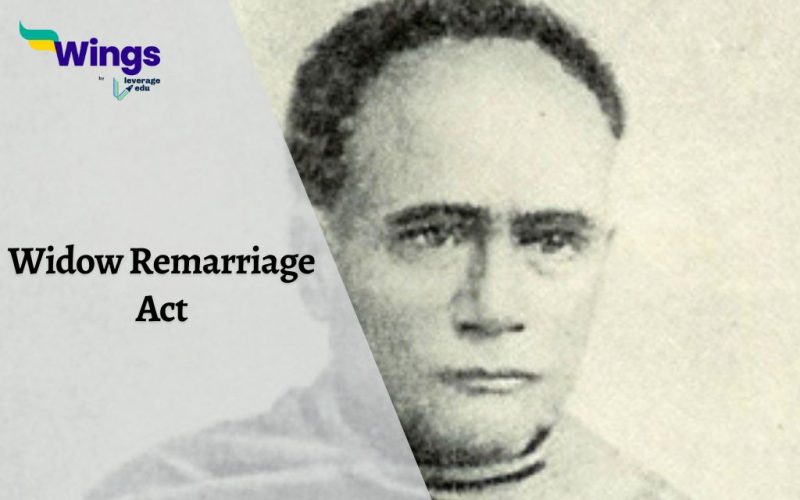The Widow Remarriage Act also known as the Hindu Widow Remarriage Act and Act XV, 1856 legalised the remarriage of Hindu widows in India under the control of the East India Company. After the abolition of the practice of Sati in 1829 by Lord William Bentinck, the Widow Remarriage Act was the first significant social reform legislation.
Must Read: Raja Ram Mohan Roy, the Modernist Reformer of India
What was the Condition of the Widows Before the Widow Remarriage Act?
Table of Contents [show]
- The Hindu Widows due to societal norms, had to live a sombre life and renunciate all desire and self-interest.
- The stringent rules and regulations were mostly followed by the high-class people at that point in time.
- Most affected by this were children who were married off at a young age.
- Remarriage was completely forbidden despite the widow’s age or whether the marriage was consummated.
- Widows had to shave their heads, wear coarse white sarees and were not allowed to wear blouses.
- Widows were cast out by the family and society and not included in the celebration of festivals.
- While citing Hindu scriptures, Ishwar Chandra Vidyasagar argued that widow remarriage was not against the tenets of Hinduism. His constant efforts led to the enactment of the Widow Remarriage Act throughout India by Lord Canning.
Provision Provided by the Act
On the 26th of July, 1856 the Widow Remarriage Act was enacted. The act was drafted by Lord Dalhousie and passed by Lord Canning just before the Revolt of 1857.
- The Act recognised a remarried widow’s rights and inheritance as if it was her first marriage.
- The Act forfeited the duties, rights, and inheritance from her previous marriage.
- The Act legally protected males who married a widow.
- The Act validated and regulated widow marriages.
What was the Condition After the Implementation of the Widow Remarriage Act?
- The Act marked a pivotal moment in the reformation of Indian society during the 19th century.
- It safeguarded the rights of widows, especially children who were married during their childhood.
- Widow remarriage was already a common practice among the lower class during that time.
When did the First Widow Remarriage take place?
On the 7th of December 1856, the first Widow Remarriage under the law took place in north Calcutta. The groom was the son of Ishwar Chandra Vidyasagar’s close friend.
Results
#1. When was the Widow Remarriage Act enacted?
#2. Who drafted the Widow Remarriage Act?
#3. Who passed the Widow Remarriage Act?
#4. When did the first Widow Remarriage take place?
Relevant Blogs
| Lord Lansdowne | Lord Irwin |
| Lord Lytton | Lord Chelmsford |
| The Government of India Act 1919 | Civil Disobedience Movement |
| Morley-Minto Reforms | Gandhi Irwin Pact (1931) |
| Bengal Partition | Chalukya Dynasty |
We hope you liked what you read. If you want to read more articles like this you can visit our general knowledge page on Indian History!
 One app for all your study abroad needs
One app for all your study abroad needs


















 45,000+ students trusted us with their dreams. Take the first step today!
45,000+ students trusted us with their dreams. Take the first step today!
